Walk this way…


Pedestrian safety improvements at Sands Farm

In this issue...
The importance of face masks
Hierarchy of road users
Know the signs of heat stress Chance to win £50

A warm welcome to issue



Pedestrian safety improvements at Sands Farm

In this issue...
The importance of face masks
Hierarchy of road users
Know the signs of heat stress Chance to win £50

A warm welcome to issue
As part of our ongoing commitment to exceptional health and safety, this particular edition shines a light on some great examples of this from around the business.

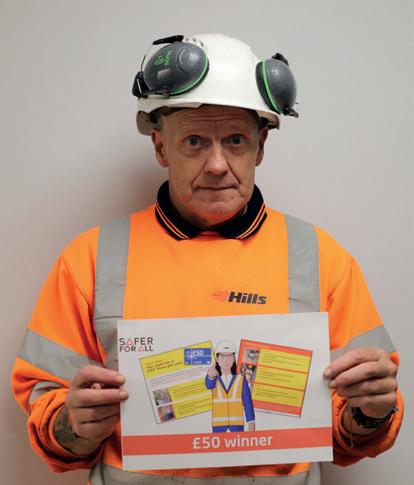
Read all about the pedestrian safety improvements at Sands Farm, spotting the signs of heat stress and the importance of PPE maintenance.
Mike Hill, Chief Executive
£50
Congratulations to (from L to R) Dean Westerman, Yard Person, Angie Eydmann, Waste Support
Officer and Terry Matthews, Kerbside LGV Driver who were the lucky winners of our last Safer For All competition.

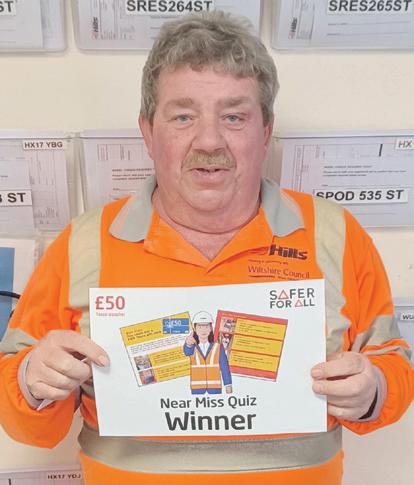
All of them correctly identified each of the five Near Misses and went into our draw to win one of three £50 Tesco gift cards.

The answers were: Question 1: B, Question

A, Question 3: B, Question 4: A, Question 5: B.


Near Miss reporting is vital in helping to maintain high standards of health and safety across all Hills’ sites. If you’ve seen something that isn’t safe, tell us about it. It’s so important to report all near misses, however big or small. If in doubt don’t leave it to someone else to find, you must report it immediately.
Fill in your Near Miss booklet and hand it to your line manager.
Access the Near Miss form via the icon on your company mobile or laptop.

Look out for QR code stickers around your site and scan them with your smart phone.

In order for your PPE (Personal Protective Equipment) to provide you with the very best protection, it MUST be in date and in good condition. That’s why it’s so important to regularly check yours and to know when to replace it.
Make sure your PPE is cleaned regularly, particularly when it comes to clothing with retroreflective strips such as hi-vis jackets, trousers and coveralls. Dirty PPE can be less effective and even dangerous.
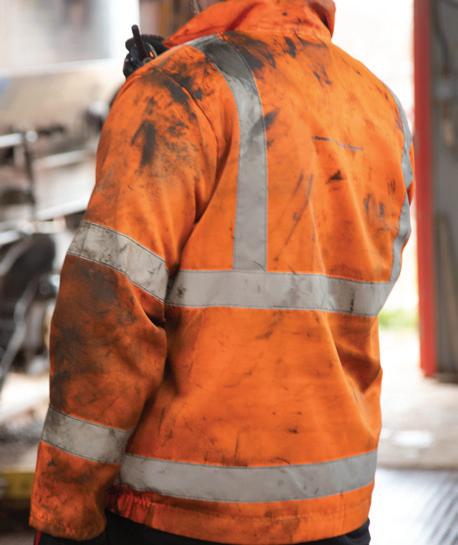


It’s vital to regularly check that your PPE is not defective in any way and to report all defects or losses immediately. Even small defects such as a broken zip or a slight tear in a glove can alter the level of protection offered by your PPE.
REMEMBER: If you have any concerns regarding PPE, or you are unsure whether yours is still in date always check with your site manager.
It’s important to ensure that your safety footwear is still fit for purpose and if you are in any doubt to replace it. Look out for worn tread design, the separation of rubber or PVC parts, damaged toes, any protective components showing, cuts and cracks.

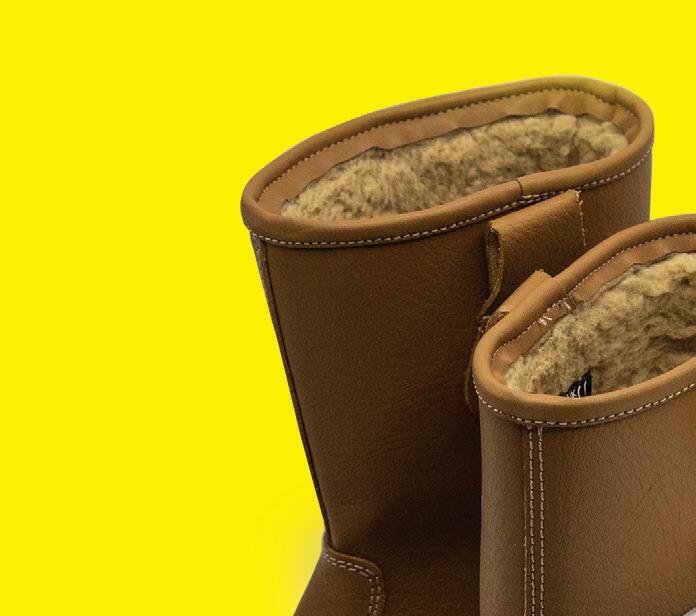





















Even if you’ve thoroughly inspected your PPE and it looks in good condition, it’s important to check that it is still within date. Safety helmets need to be replaced at least every five years after the date of manufacture and safety goggles every three years. Using expired PPE can mean inadequate protection, so ALWAYS check yours is valid.
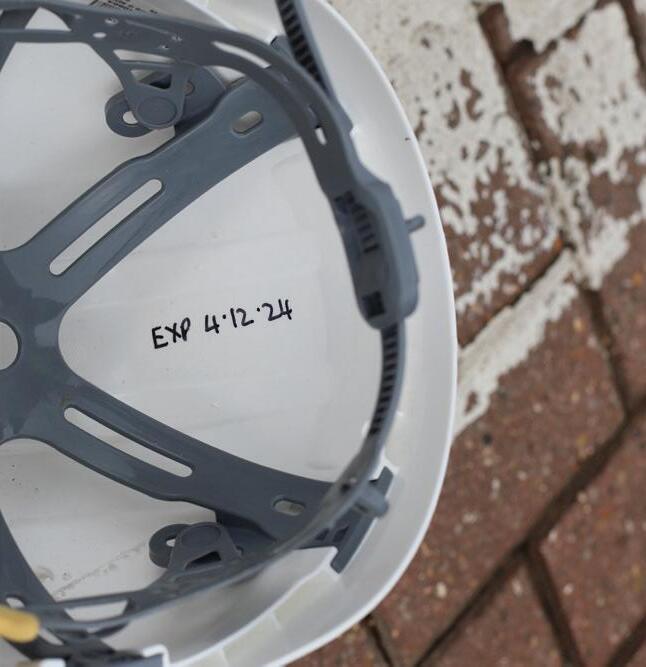
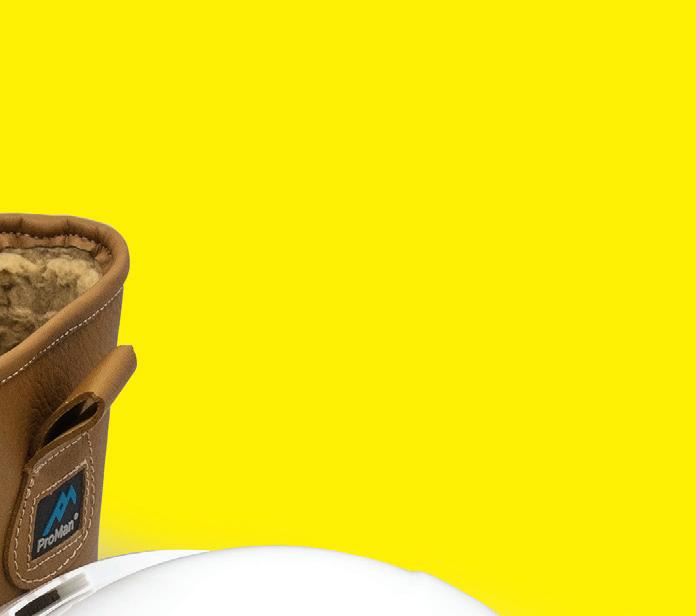


Did you know that by wearing an incorrectly fitted face mask you could be increasing your risk of silicosis?




Silicosis is a chronic lung disease which can be caused by inhaling large amounts of crystalline silica dust known as respirable crystalline silica (RCS). While too fine to see with the naked eye, this dust is produced during the extraction, crushing and cutting of certain types of stone, rock, sand and clay.
Thankfully, wearing the correct respiratory protective equipment (RPE) and personal protective equipment (PPE) alongside safe working practices, can remove the risk of exposure.
To ensure your RPE is providing adequate protection it must be fitted properly. Whilst all RPE is fit tested before initial use, it’s important to regularly check yours.
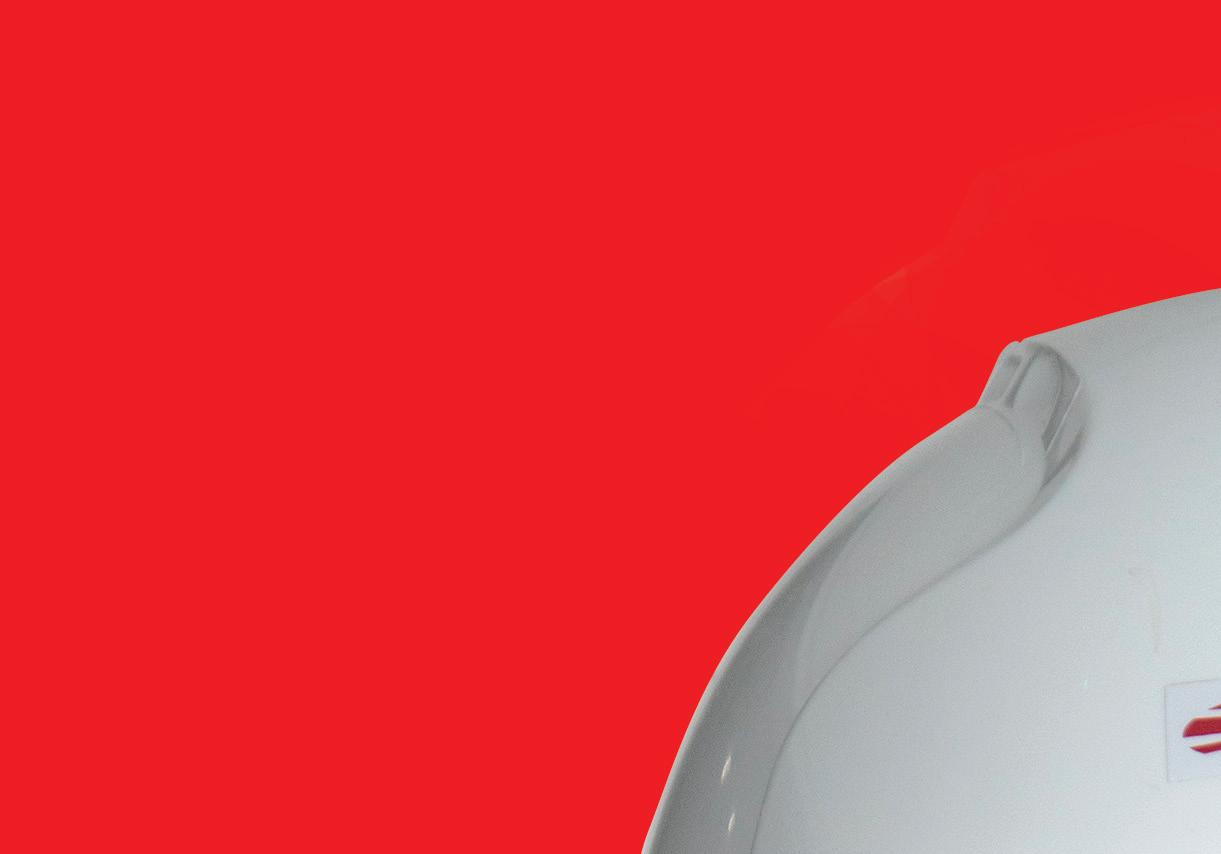
1. Perform a self-check of your mask before every use to ensure the perfect fit. Check there are no gaps around the edge of the mask where ‘dirty air’ could pass through into your lungs. See our guide below to check that yours is fitted correctly.
2. Remove facial hair such as beards and stubble when wearing a tight-fitted mask. As recommended by the HSE, in order to ensure a good seal all facial hair should be removed or an alternative form of RPE used instead.
3. Make sure your mask is clean and in good working order. Replace disposable masks and filters as recommended by the manufacturer.
4. Be sure to always store your mask in a clean, dust-free area when you are not wearing it to avoid contamination.

5. Never remove your mask in a dusty environment. Whilst dust levels are monitored meticulously on all sites, taking off your mask in areas containing RCS could put you at risk.
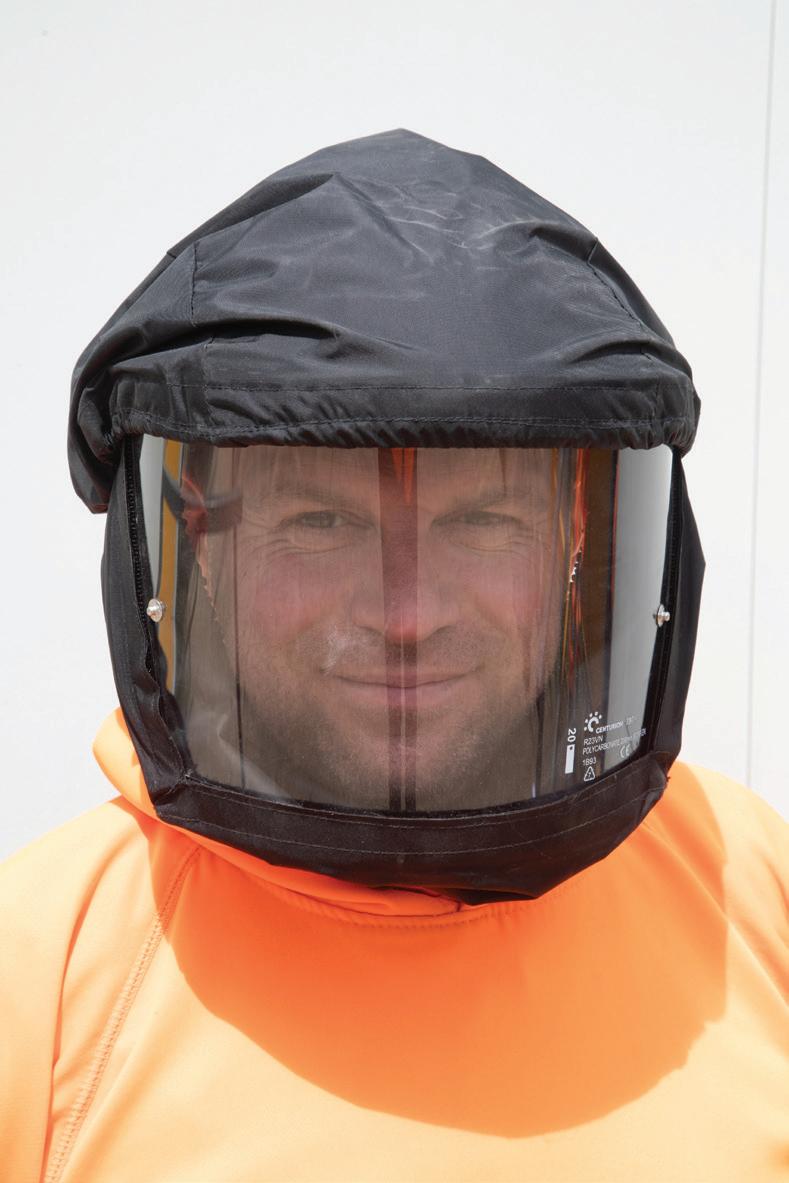


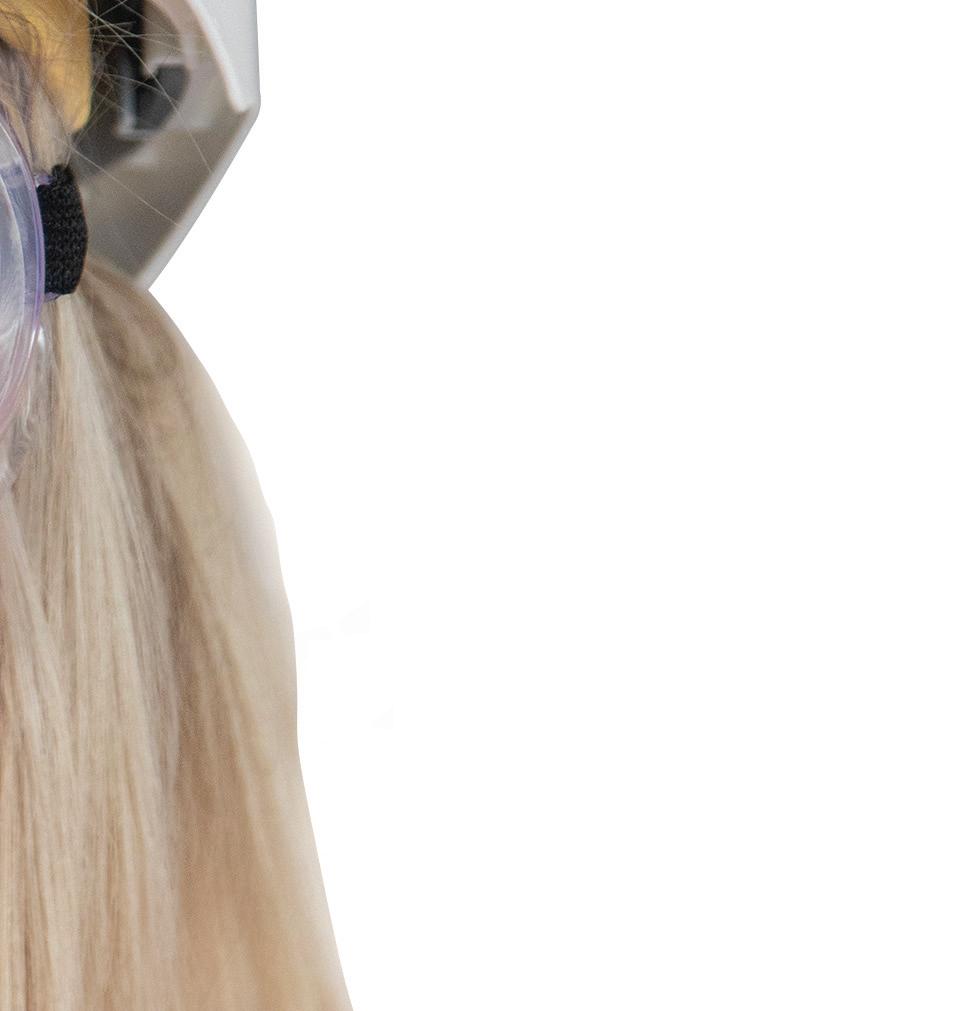
Nose clip shaped?
Straps in place?
Edges tight?
Chin snug?
If you wear a beard you should use a respirator or similar, alternative apparatus.
We all know how important it is to take care of our physical health, but when it comes to our mental welfare many of us tend to overlook the warning signs we are suffering. While stress and worries can affect everyone differently, if you find that your concerns are taking over your life or stopping you from carrying out your normal activities, it’s important to talk to someone.
Remember, all Hills employees have access to free confidential counselling and support through one of the employee assistance programmes offered through Westfield Health or Health Assured. So if you’re worried don’t suffer in silence, give them a call or visit their website for help.
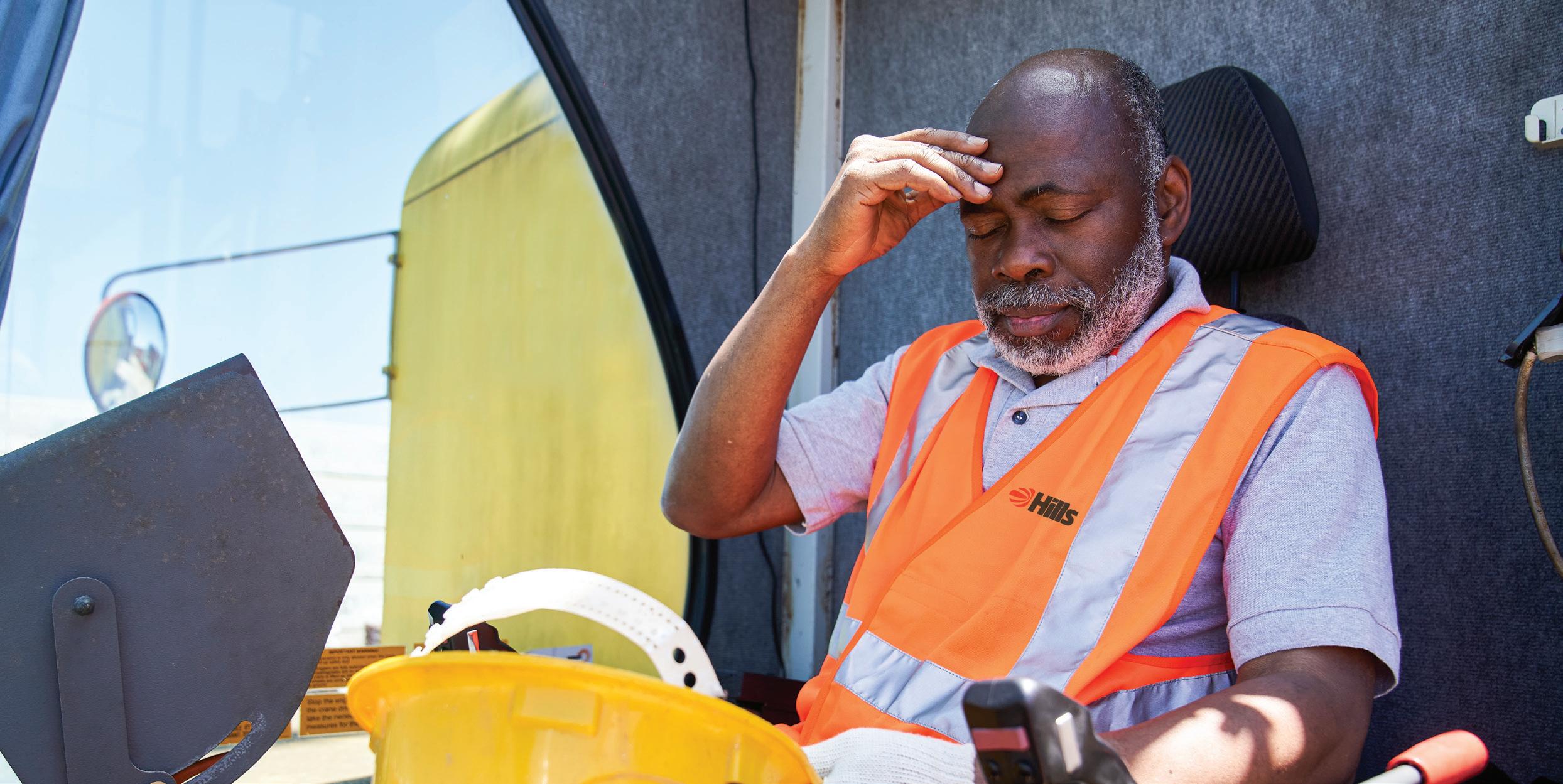
Whatever the British weather throws at you, it’s important to stay safe when working in hot conditions. Keeping cool and taking regular breaks can help prevent heat stress and other seasonal related hazards. Read our tips below on how best to tackle higher temperatures.


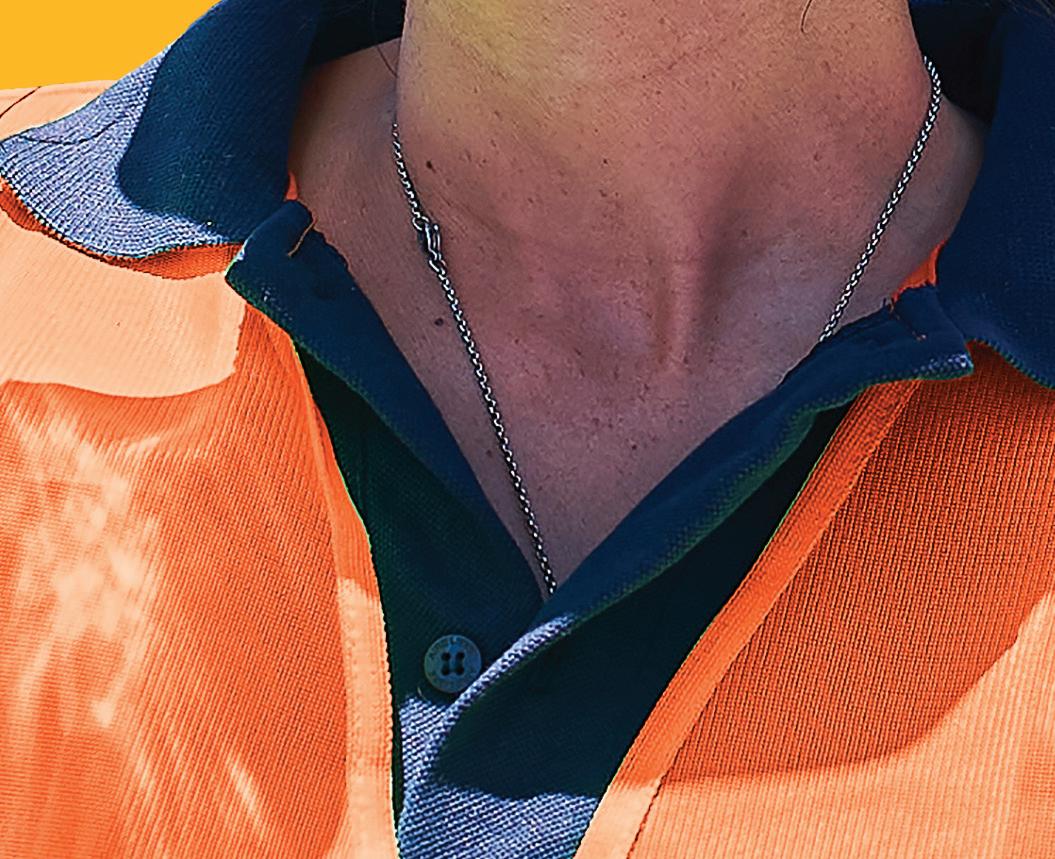



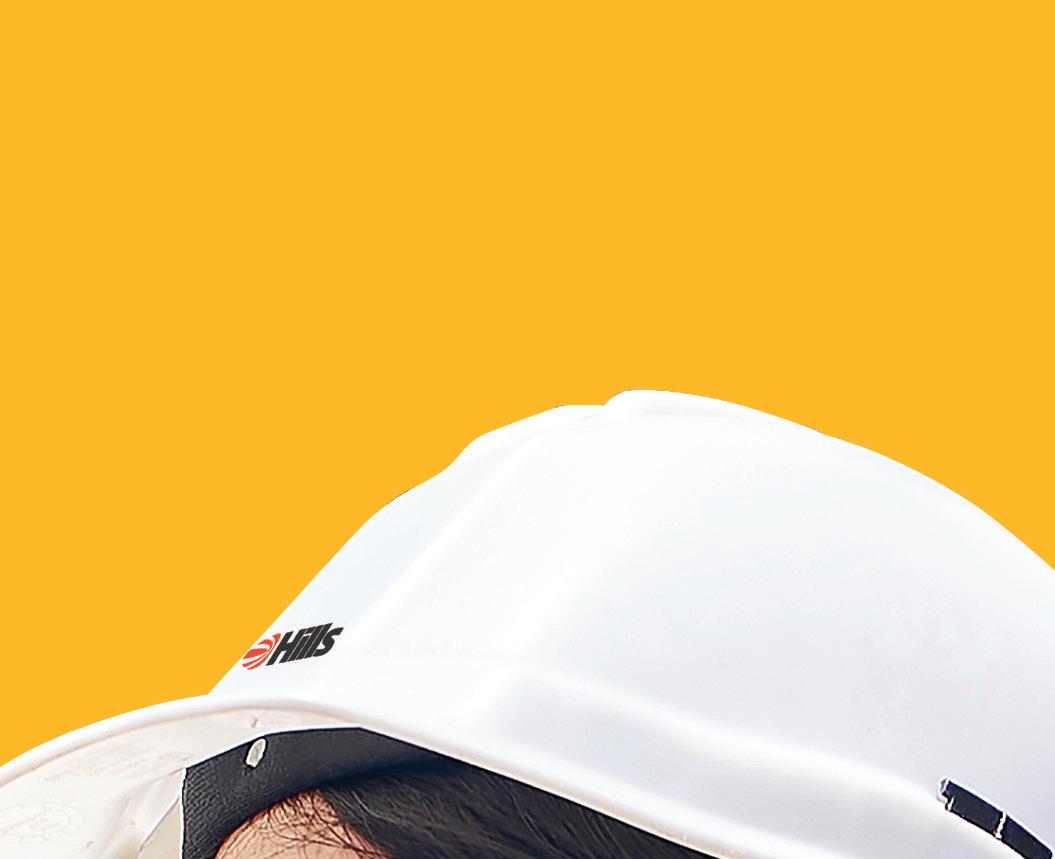


Stay cool
Remove layers of clothing depending on how hot you are to reduce sweating and overheating.

Keep hydrated
Regularly drink plenty of hydrating liquids such as water to prevent dehydration. It’s also best to avoid caffeinated and carbonated drinks where possible.
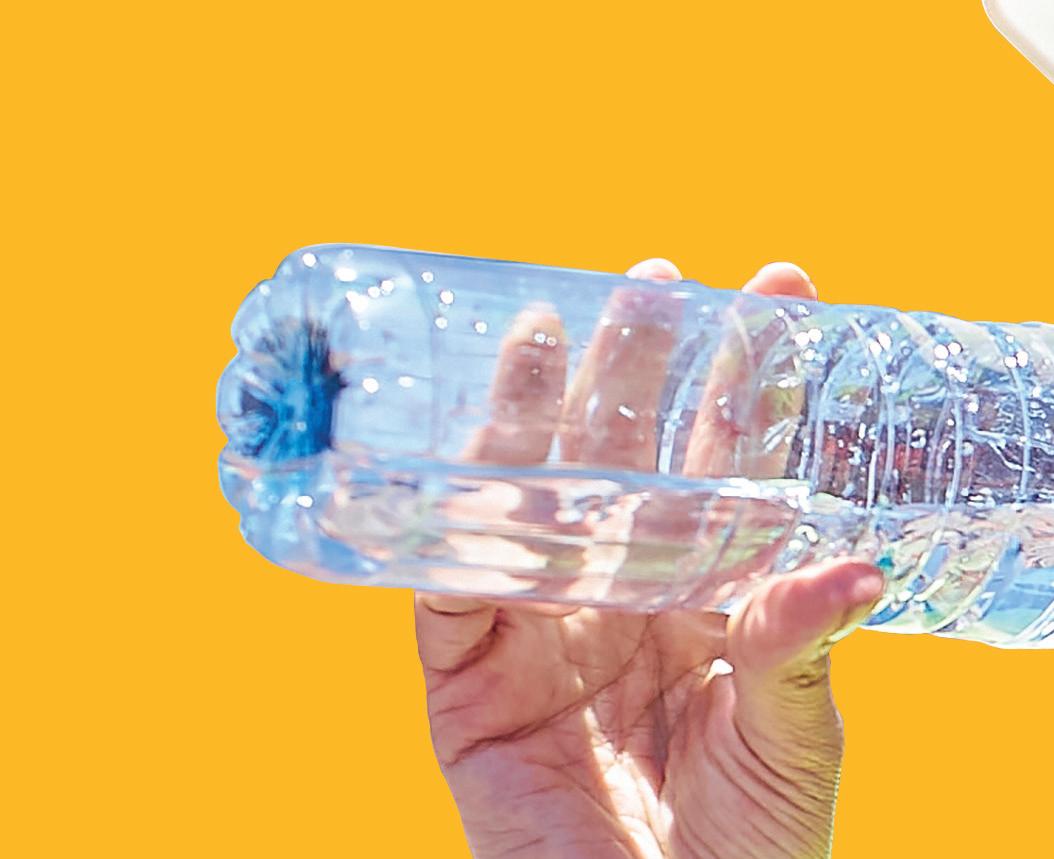
Slow down
Take regular breaks to cool down in hot conditions. In extreme conditions such as heatwaves remember to slow down and not rush around.
Seek shade
Wherever possible don’t work in direct sunlight. If you are unable to avoid this make sure you seek shade during your breaks and lunchtime.
Stay protected
If it’s sunny outside, ensure you cover up exposed skin with a high-factor sunscreen and keep it topped up throughout the day.
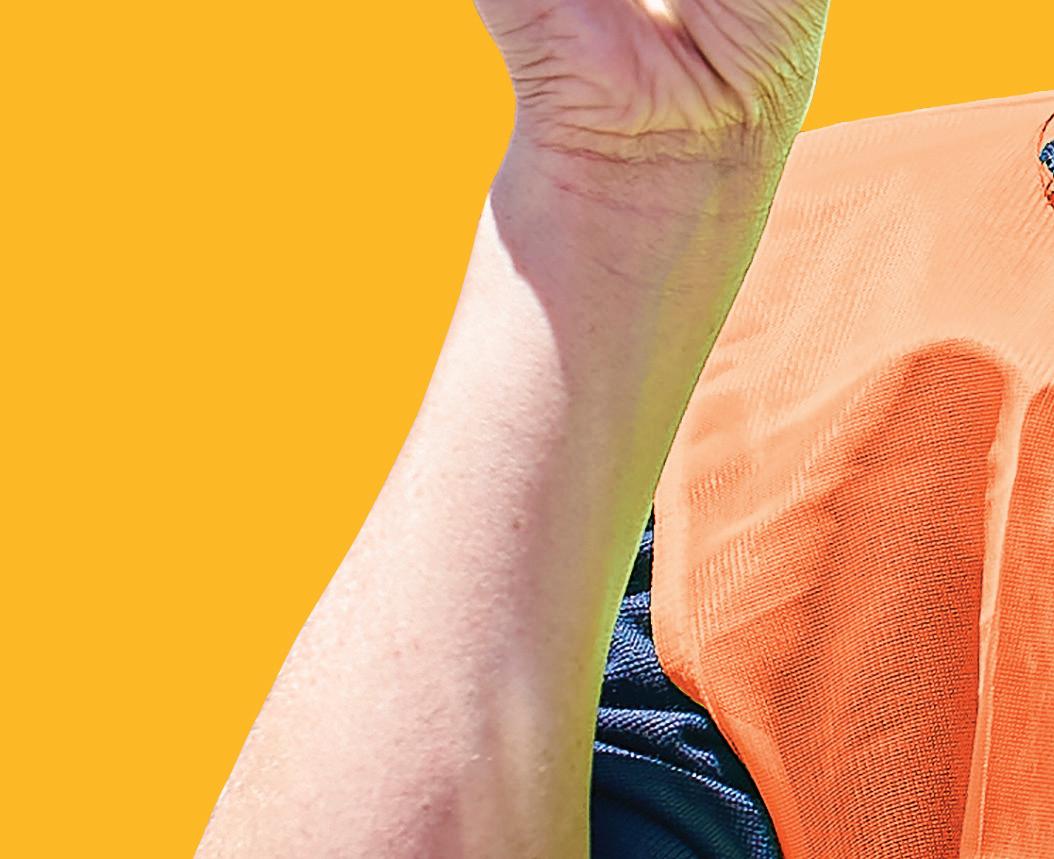

With the changeable conditions, the heat can really creep up on you. As thermometers rise and the sunshine returns once again, unfortunately so too does the risk of heat stress.
Heat stress occurs when the body is unable to control its internal temperature. Seasonal changes to humidity levels and outside air temperature, working in direct sunlight and wearing unsuitable clothing, can all increase your likelihood of suffering from it.
























Being unable to concentrate

Muscle cramps








Heat rash

Extreme thirst
Fainting

Early detection and prompt action may prevent heat stress from escalating into more severe conditions such as heat exhaustion or heat stroke, which can be fatal. That’s why it’s important to know the signs, especially if you are working outdoors or in a hot environment.
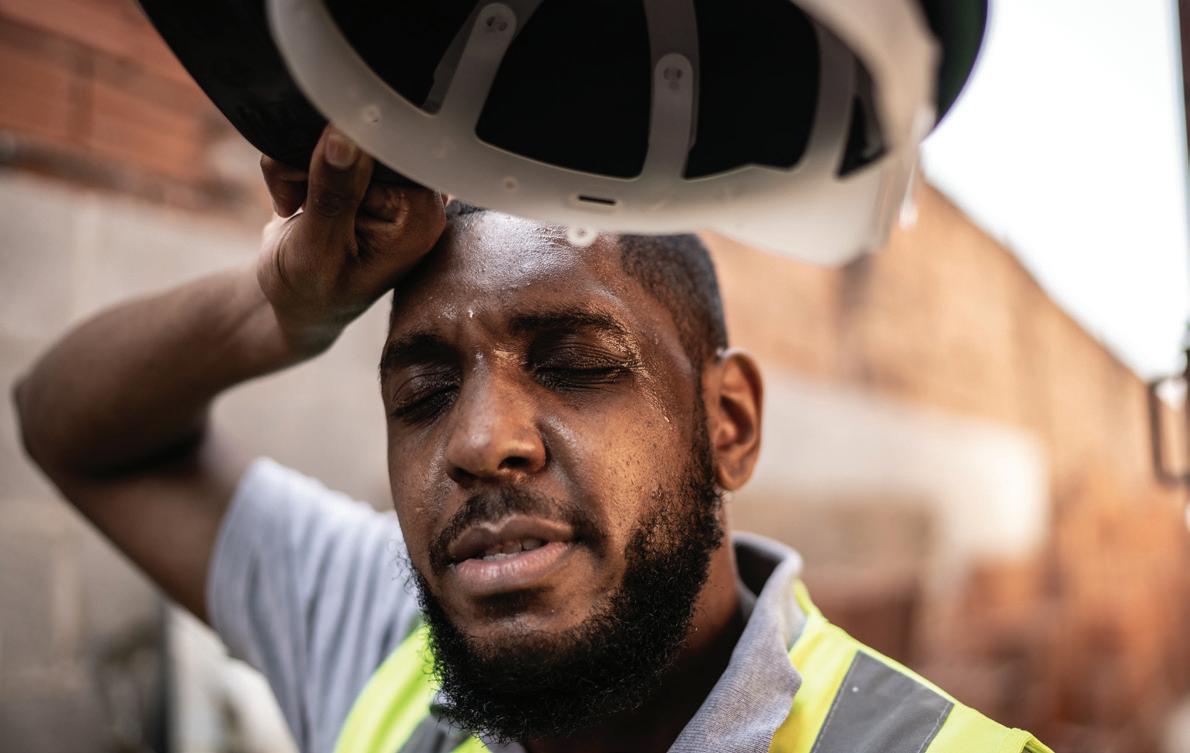


What are the warning signs that heat stress has escalated?
Signs of heat exhaustion
Fatigue
Dizziness
Nausea
Headache
Moist skin
Signs of heat stroke
Hot dry skin

Confusion
Convulsions



Loss of consciousness
If you or anyone else is suffering from any of these signs seek immediate medical attention.








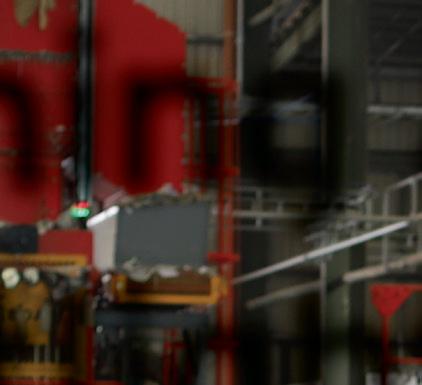

Employee safety is always at the top of our list, so the new crossing at Sands Farm is a welcome addition.
The FHOSS Illuminated Safety Walkway System was recently installed at the Materials Recycling Centre (MRF) in order to ensure a secure and clear crossing point for both pedestrians and plant operators at the site.

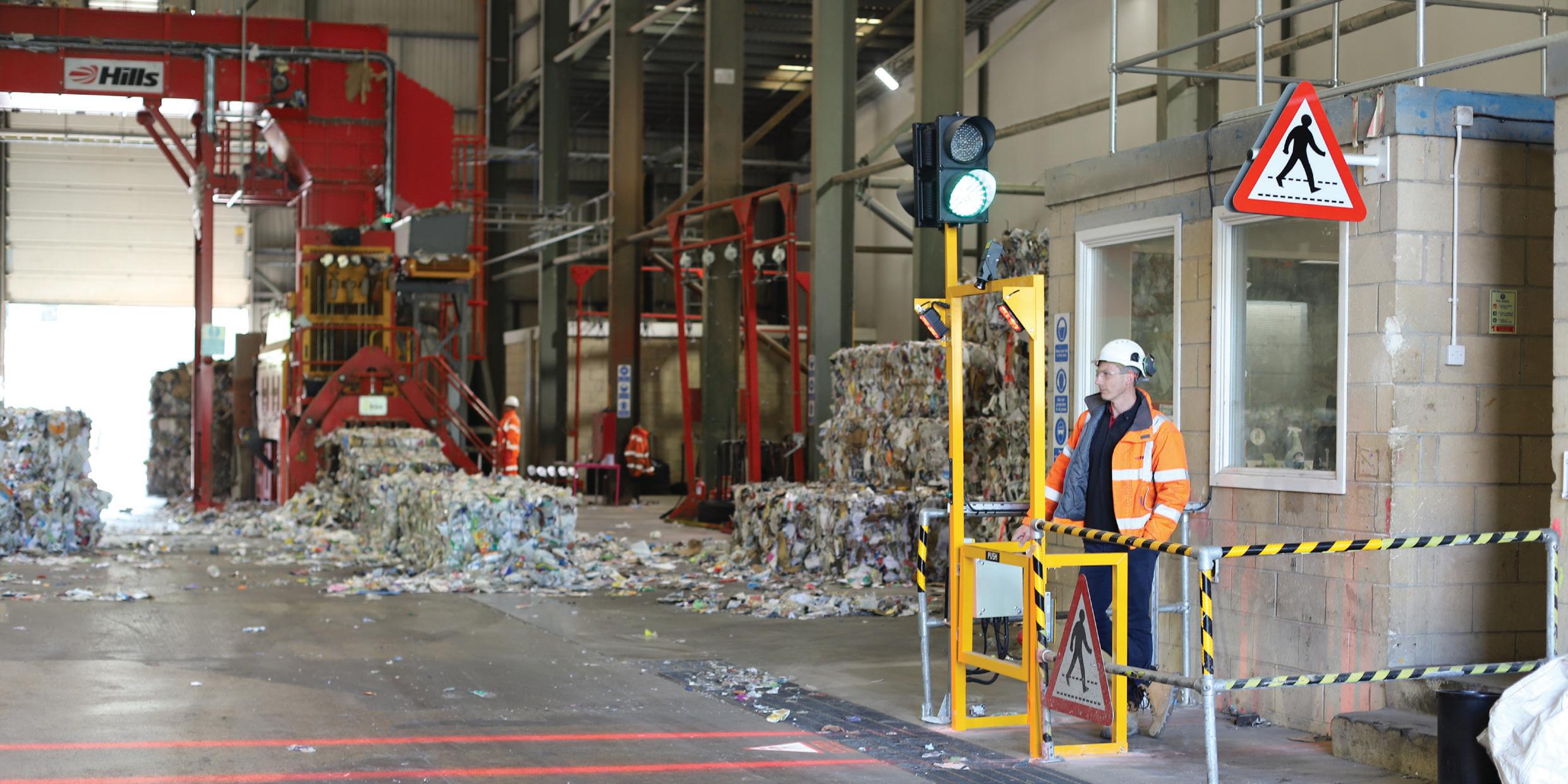
The new crossing forms part of a wider focus on pedestrian segregation to help control the flow of mobile plant and pedestrian movement.
Paul Elling, Compliance Manager for Waste Solutions said: “Mitigating the risk to pedestrians across our industry is a priority safety issue and I commend all concerned for their innovative approach to managing this risk. The installation of this crossing is a clear demonstration of our commitment to avoiding accidents by separating pedestrians from moving plant.”
Electromagnet pedestrian gates are located on either side of the crossing point ensuring that pedestrians can’t cross until it is safe to do so.

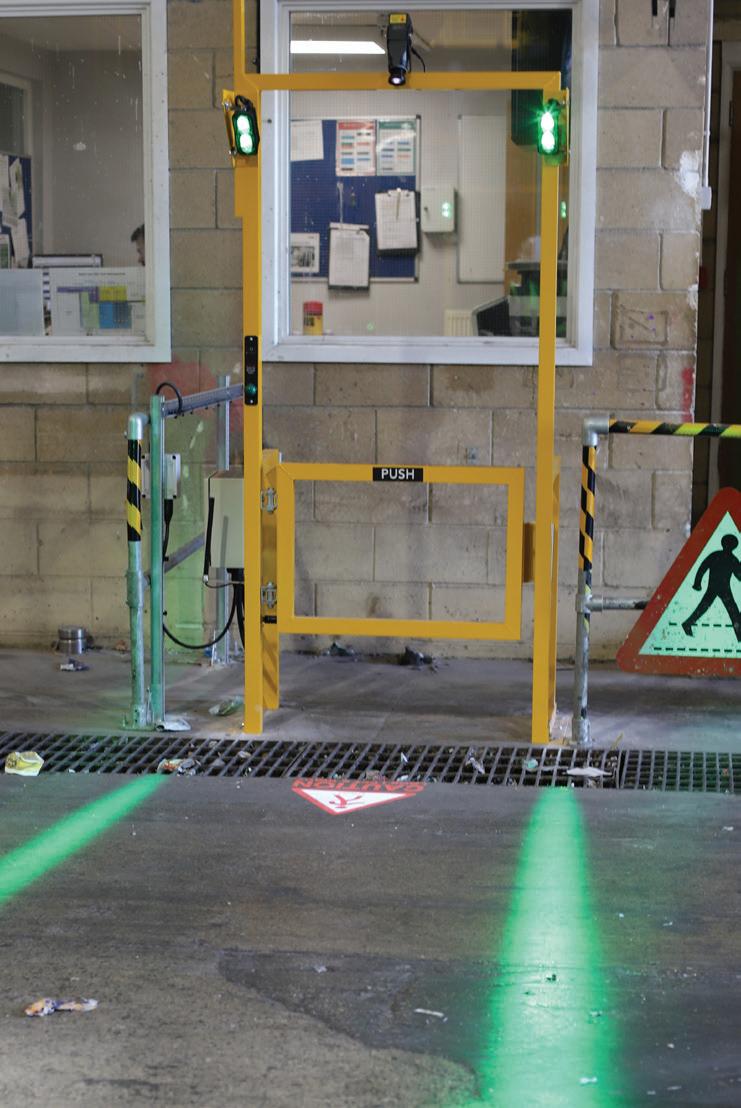
The pedestrian walkway is marked with lights positioned on the top of the gateways with markers projected down on either side of the walkway.
There is also a sign projected on the floor to identify the walkway as a pedestrian crossing.

Traffic lights are positioned on each side of the walkway to control plant movements. The lights will mark the crossing in red as a default.
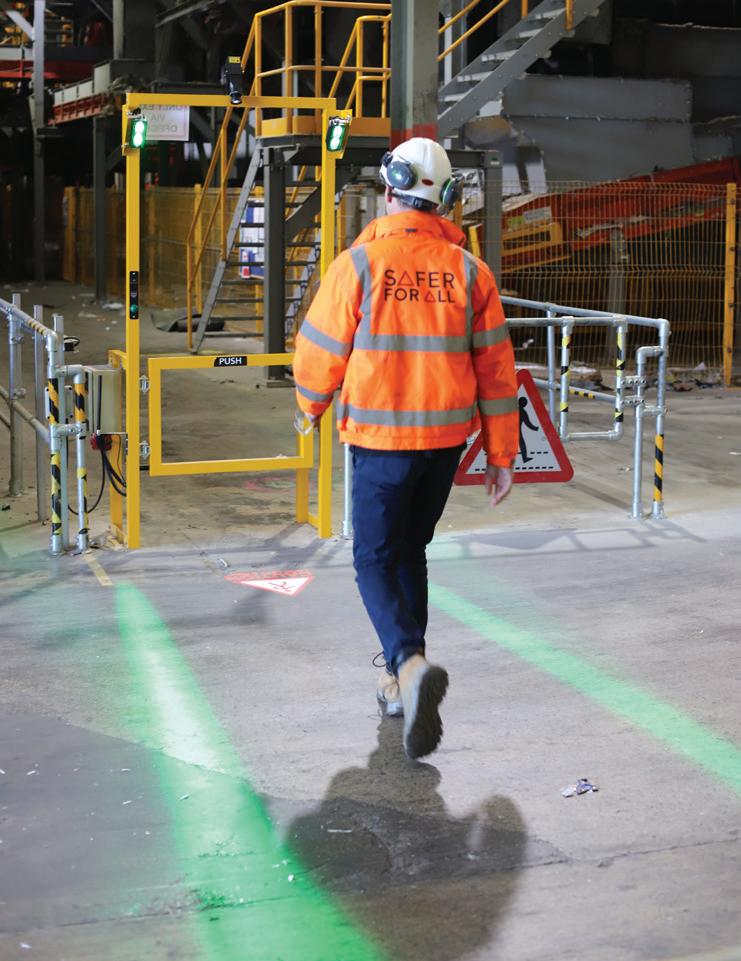
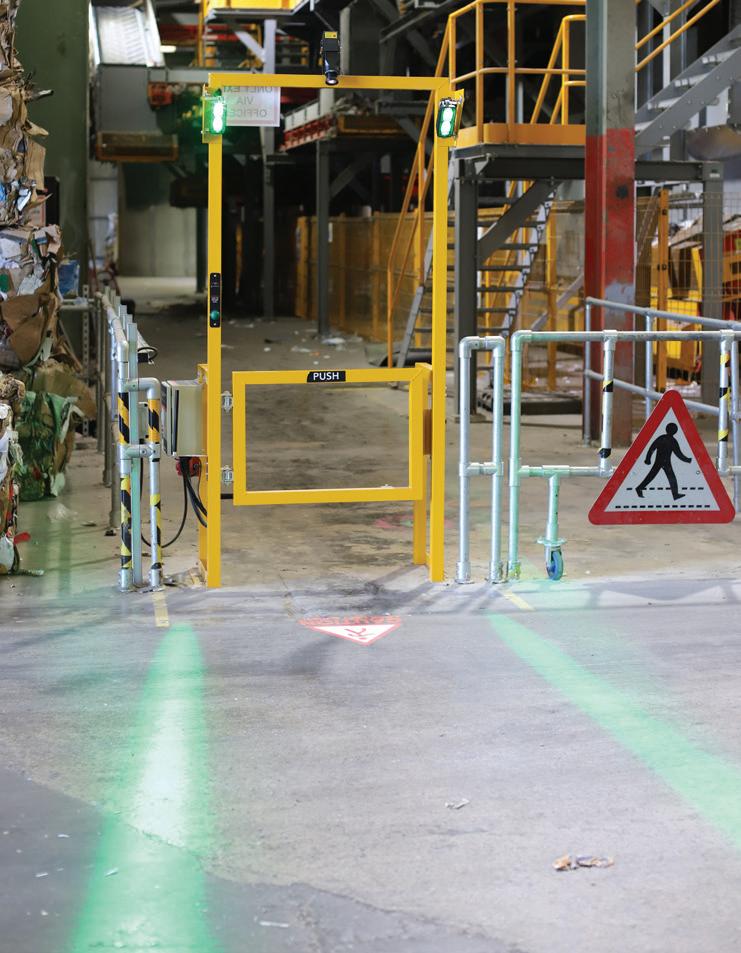
To cross, press the button on the gate. Wait for the pedestrian lights and markers to turn green. The gates will unlock and a siren will sound to signify you can cross with care.
Once the pedestrian has crossed, the marker lights will then change back to red, the gates will lock and the vehicle traffic lights will turn back to green.

In 2022 the Highway Code was updated to include new rules about the hierarchy of road users. While all road users have a responsibility to ensure both their own and others’ safety, the new hierarchy places pedestrians at the top and heavy goods vehicles at the bottom.

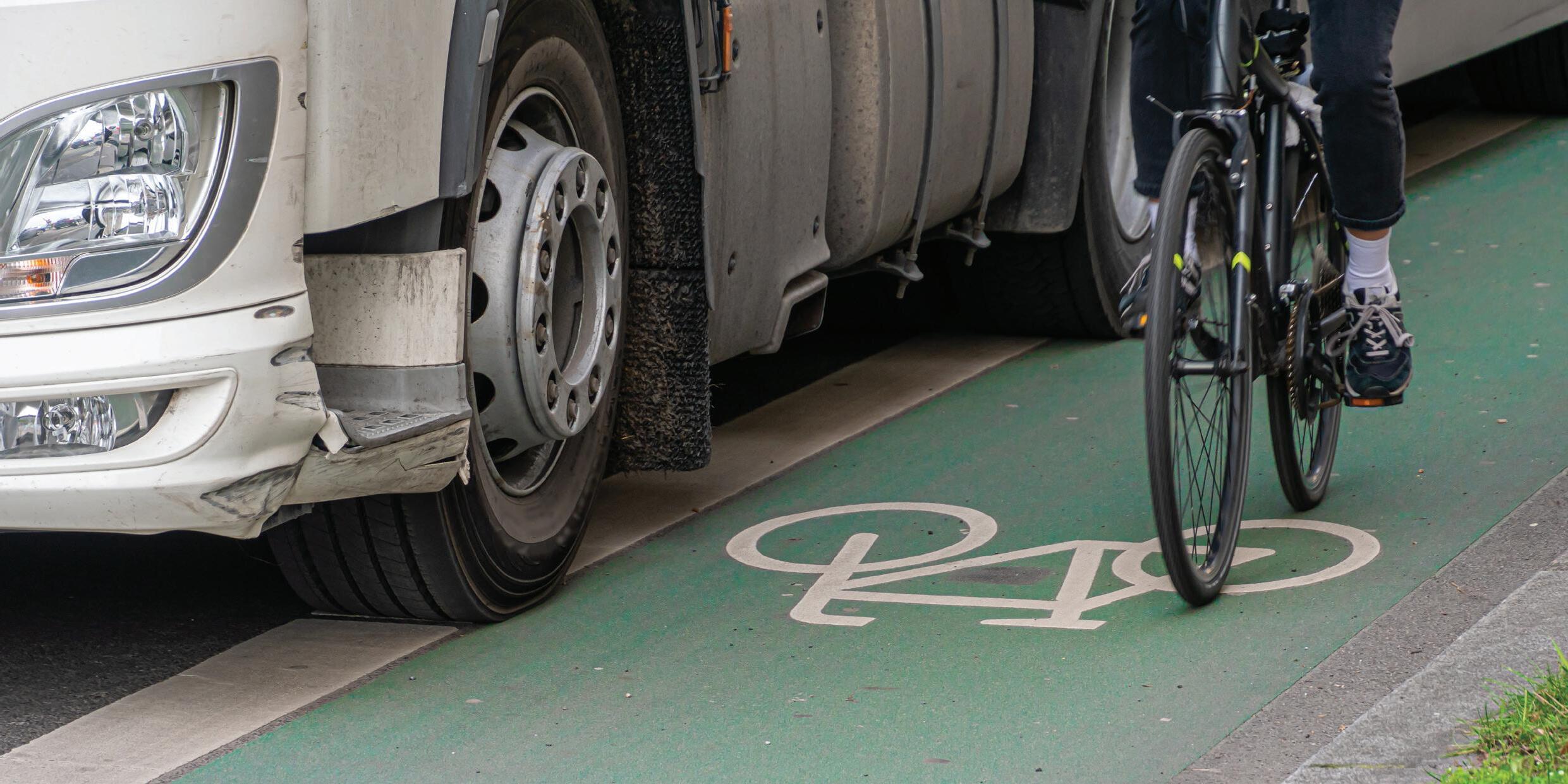
Pedestrians are the priority
Pedestrians are the highest priority: they may use any part of the road and use cycle tracks as well as the pavement unless there are signs prohibiting them.

Cyclists are the next highest priority because they are also very vulnerable on the road. All road users should exercise extra caution around them.
For further information about all the changes to the highway code go to www.gov.uk/guidance/the-highway-code

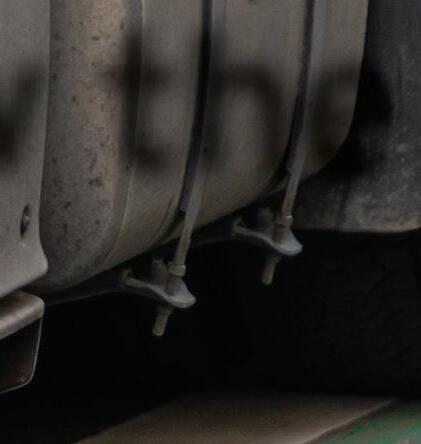
Give way to cyclists waiting to cross on a parallel crossing, in a cycle lane and when cyclists are approaching from behind.
Do not cut across cyclists, horse riders or horse-drawn vehicles in the left-hand lane when turning into or out of a junction or changing direction or lane. This applies whether cyclists are using a cycle lane, track, or the road.
Give horse riders and horse-drawn vehicles a minimum distance of 2 metres in all conditions. Give priority to cyclists on roundabouts. Leave plenty of room and do not attempt to overtake them within their lane.
All road users (including cyclists) must give way to pedestrians waiting to cross at a zebra or parallel crossing and at a light-controlled crossing when on red or amber for vehicles.
2m 1.5m

Wait behind pedestrians, motorcyclists, cyclists, horse riders or horse-drawn vehicles and do not overtake until it is safe to do so.
Give way to pedestrians crossing or waiting to cross a road into which or from which they are turning.
Leave a minimum distance of 1.5 metres when overtaking cyclists and give them more space when overtaking at speeds above 30mph.
Allow cyclists to move across your path as they travel around roundabouts.
Allow cyclists to ride in the centre of the lane on narrow roads, at road junctions or in slower-moving traffic.

300 unsafe acts or conditions

29 minor accidents
Heinrich’s Accident Triangle theory predicts that for every 300 near miss incidents there will be 29 minor and one major accident. Preventing unsafe acts and unsafe conditions will lead to fewer accidents. Here is a selection of recently reported near misses and the actions taken. All near miss incidents can be viewed on eTouch.
1 major accident
While carrying a box out of the building, I tripped over the upturned edges of the temporary external door mats which were loosely laid.
Reported by Chris Waddell County Park
All loose external matting was removed immediately to ensure no further incidents.
An HGV driver arrived to have his ticket signed and was not wearing his safety footwear.
Reported by Gavin Walton Shorncote Quarry
The driver was reminded about the importance of wearing the correct PPE on site.
Member of the public cycled against the one-way system which could have resulted in a serious accident.

Reported by Joan Davies County Park
A review of the road markings and external signage was undertaken.
Incident Action taken
While walking down some steps I discovered that the nosing/overhang on one of the steps contained a slight split.
Reported by Zeke Watson Mortimer Quarry
The step was checked and swiftly repaired to ensure that it was safe.
Incident Action taken
A driver standing by the concrete plant at the rear of his tipper was not wearing hi-vis which could put him in danger.
Reported by Grant Carter Woodsford Quarry
The driver was re-educated about PPE requirements whilst on site and the importance of adhering to site rules.
Incident Action taken
I was using a pedestrian gate and noticed that some of the wire mesh was loose, which could pose a hazard to other users.
Reported by Dave Smith Lower Compton Transfer Station
The gate was quickly removed, repaired and replaced.
Incident Action taken


A Recycling Collection
Vehicle driver walked under the raised and unsupported rear of his vehicle after tipping waste.
Reported by Paul Scriven Northacre RRC




The driver was reminded about the importance of following health and safety procedures.

There were a total of four RIDDOR (Reporting of Injuries, Diseases and Dangerous Occurrences Regulations) incidents across the Group during the 2022/23 financial year. Waste Solutions reported three incidents and Municipal Collections reported one.
(per
(per financial year 01 May to 30 April)
Complete the crossword on page 19 and the wordsearch on page 20 to be in with a chance to win one of three £50 Tesco gift cards. All correct submissions will go into a draw and winners will be selected at random.


£50

Across
2. How much space should you give a horse rider on the road? (3, 6)
3. Where has the new illuminated safety walkway been installed? (5, 4)
4. Keep in mind this symptom of heat stress. (9)
7. Who has priority over all road users? (11)
10. You should always check your PPE for _______ .(7) Down
1. Your face mask should have a __________ . (7, 3)
5. We need you to report every ________ . (4, 4)
6. How often should you replace your safety helmet? (5, 4, 5)
8. What should you apply when working in direct sunlight? (9)
9. A quick and easy way to report a Near miss. (2,4)

Remember to complete both puzzles on pages 19 and 20 to be in with a chance to win one of three £50 Tesco gift cards. All correct submissions will go into a draw and winners will be selected at random.
Add your name and site location below, then cut off this back page and hand it to your line manager or send it via internal post to the communications department at County Park, Swindon. Alternatively, type or circle and photograph your answers, then email them to info@hills-group.co.uk Your entry must be received by Friday 17 November 2023. Only one entry per employee.
Name: Location